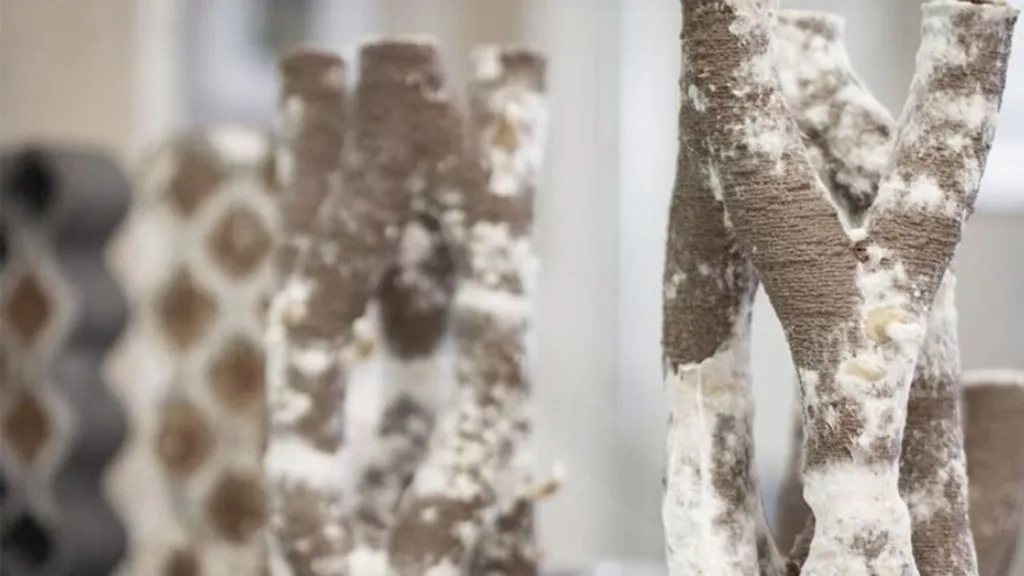In a groundbreaking development poised to revolutionize the construction industry, researchers have unveiled a novel method for creating strong, thermally insulating mycelium-bound composites (MBCs). This innovation, detailed in a recent study published in *Nature Communications* (translated to “Nature Messages”), offers a sustainable alternative to traditional petroleum-based materials, promising significant implications for the energy sector.
At the heart of this research is the integration of 3D printing technology with biomaterials. The team, led by Deepak Sharma from the School of Mechanical and Aerospace Engineering at Nanyang Technological University, has demonstrated that growing mycelium onto 3D-printed stiff wood-Polylactic Acid (PLA) porous gyroid scaffolds can enhance the strength and functionality of the resulting composites. “The key to our success lies in the synergy between design and biomaterials,” Sharma explains. “By optimizing the porosity and structure of the scaffolds, we can significantly improve the performance of MBCs.”
The study reveals that the extent of improvement in MBCs’ performance is directly dependent on the mycelium growth, with the best results observed at 90% porosity. The researchers achieved a yield strength of 7.29 ± 0.65 MPa for 50% porosity MBC and a thermal conductivity of 0.012 W/mK for 90% porosity MBC. Notably, the maximum improvement in yield strength (50.4–77.7%) was observed at medium (70%) to high (90%) porosity levels.
Beyond mechanical strength and thermal insulation, the MBCs also exhibit enhanced fire resistance, hydrophobicity, and durability compared to the base wood-PLA scaffold. These properties make them highly suitable for practical applications in the construction industry, particularly in the energy sector where thermal insulation and fire resistance are critical.
The commercial implications of this research are substantial. As the world increasingly seeks sustainable and eco-friendly materials, the development of strong, thermally insulating MBCs could pave the way for greener infrastructures. “This innovation not only reduces our reliance on petroleum-based materials but also offers a more sustainable and cost-effective solution for the construction industry,” Sharma adds.
The integration of 3D printing, design, and biomaterials opens up new avenues for future developments in the field. As Sharma notes, “Our findings demonstrate the potential of combining advanced manufacturing techniques with biomaterials to create high-performance, sustainable composites.” This research could inspire further exploration into the use of mycelium and other biomaterials in various industries, from packaging to automotive and aerospace.
In conclusion, the study published in *Nature Communications* represents a significant step forward in the quest for sustainable and high-performance materials. By leveraging the unique properties of mycelium and advanced 3D printing techniques, researchers have unlocked new possibilities for greener and more efficient infrastructures. As the construction industry continues to evolve, this innovation could play a pivotal role in shaping a more sustainable future.

